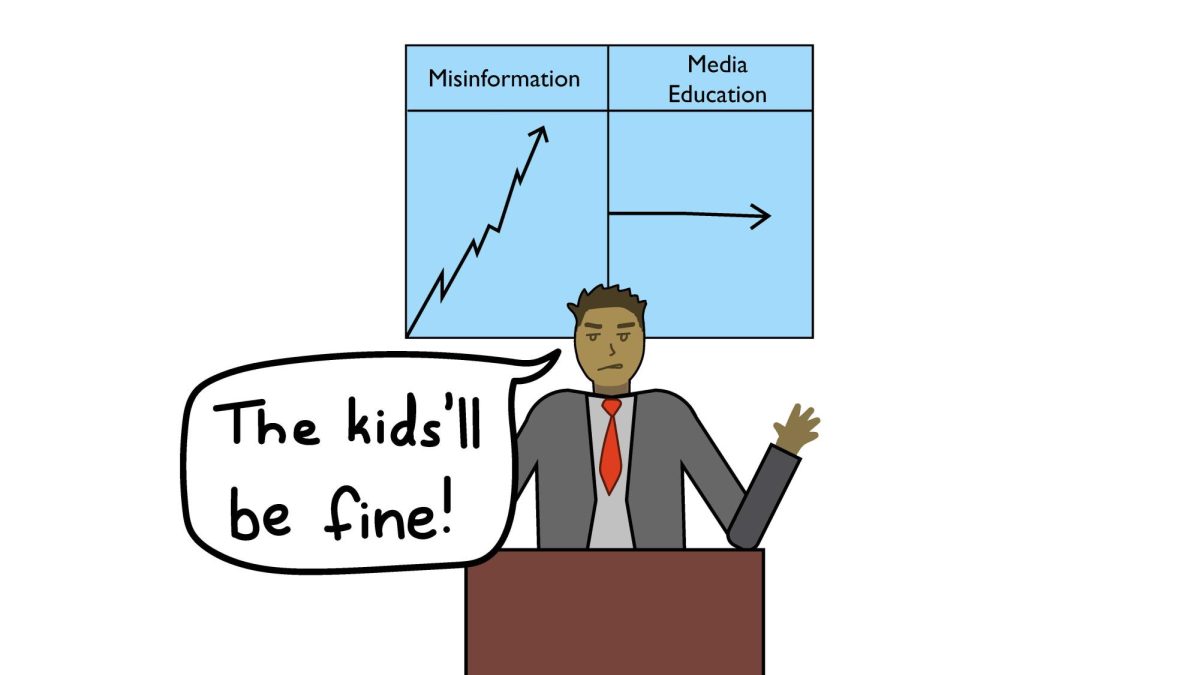Point/Counterpoint: Should affirmative action be used in college admissions?
Yes, affirmative action promotes equality in a flawed system
Arushi Sharma
For much of America’s history, elite universities have been reserved for mostly wealthy and white citizens. Beginning in 1965, these institutions focused on diversifying student bodies by embracing tools like affirmative action. In a collegiate context, affirmative action is the practice of considering race and ethnicity as one aspect of an assessment of a student’s application. Asian American and white students have historically been very successful in the higher education system , so affirmative action works to promote diversity to ensure that people who have historically been shut out of the postsecondary system get the opportunity to obtain degrees.
Although university enrollment and completion rates have improved in recent years, students of color, specifically those who identify as Black and Latinx, are more underrepresented at universities now than they were 35 years ago due to pervasive and long-lasting systems that continue to disadvantage them. One example of a systemic disadvantage is that students of color are more likely to attend underfunded K-12 schools than similarly situated white and Asian students.
Asian American income is, on average, 38% greater than the national median income, and middle-income white households usually have two times as much income as Latinx families and three times greater income than Black families. Affirmative action addresses this issue by acknowledging that it’s necessary to disadvantage these traditionally privileged groups in order to address problems concerning equal access to a college education. With these inequities in mind, focusing using race-aware admission rules are needed for advancing fairness in the higher education systems of the United States.
Although ethnic and racial minorities have profited from endeavors to raise awareness of campus diversity, systematic efforts to prioritize diversity in college admissions strengthens the educational experiences and economic outcomes of all students. Racially-integrated classrooms have been shown to lessen racial prejudice and improve scholarly self-assurance and leadership skills. These benefits may translate to better economic outcomes and prepare students to better function in a global economy.
Though many opponents of affirmative action contend that using income in the admissions process would provide a better way to equalize chances of acceptance, students of color who have wealthy parents or attend the same schools as white students still experience the educational system differently. Beginning as early as preschool, negative and discriminatory experiences related to one’s ethnicity can hinder social-emotional and behavioral development. For example, students of color are more likely to experience disciplinary actions that result in missing class. Therefore, socioeconomic status should complement rather than replace the consideration of race and ethnicity.
By working to give all students equitable opportunities, affirmative action allows students who have traditionally faced discrimination in the education system to get a quality university-level education, and by extension, helps them to improve their socioeconomic status. This, in turn can help them send their kids to a better school, creating a self-reinforcing cycle of positivity in terms of standard of living, which will ultimately help to address the long-standing racially-based income inequality in the country. Hence, it is imperative that policymakers work to ensure the use of race-conscious policies across the country in college admissions.
No, affirmative action unfairly penalizes Asian American students
Margaret He
How much of a story can a person’s skin color or ethnicity tell? When racial bias is used to dictate any selection process, it restricts and stereotypes an applicant’s profile. Although affirmative action can negatively affect a variety of different ethnicities and populations, since the landmark lawsuit in 2014 against Harvard University, affirmative action has become an increasingly critical topic of debate for the Asian American community in particular. While affirmative action can provide a valuable gateway to higher education for many disadvantaged and underrepresented populations, the irony of the policy is that by seeking to reduce inequalities for select groups of students, affirmative action inevitably creates new ones for other applicants, acting to reinforce stereotypes and stigmas that, in the end, cause it to fall short of its original purpose. After all, in what many have deemed “reverse discrimination,” any system that seeks to aid certain groups in the application process will unavoidably put others at a disadvantage.
The perhaps most obvious flaw in the affirmative action policy is that it reinforces popular stereotypes and caricatures that have long plagued the Asian community. The underlying basis for affirmative action heavily reflects the model minority myth, in which Asian Americans are perceived to have the inherent ability to achieve a greater degree of socioeconomic status in comparison to other minority groups, who are traditionally underrepresented in colleges and high-paying careers. Asians are stereotyped to be successful, smart, studious and destined to easily excel academically. Tropes such as the “Asian fail” define students of predominantly East Asian descent.
Affirmative action’s embrace of this stereotype fails to account for the diversity of populations, cultures and socioeconomic backgrounds that the Asian continent represents. Many Asians, as is true for other immigrant groups, come from roots of extreme poverty; for affirmative action to discount the hard work and merit that it took to overcome that is hypocritical. It’s true that Asian Americans hold the highest median income of any racial group, but one should also note that the Asian demographic also has the largest income gap in the United States. In any case, race is never a determining factor in one’s ability to succeed in education and it certainly does not solidify one’s economic status.
By blanketing all Asians with the concept of easily-attained success, affirmative action, all in all, perpetuates the very concepts of racial bias it seeks to eliminate. It discourages pride in one’s cultural and ethnic roots and assumes that certain populations, simply based on their race, lack the ability to succeed on their own based on historically racist beliefs regarding intelligence, drive and societal success.
Though equity is and always will be an important issue in college admissions, there are more effective and prudent ways to address it. Factors such as wealth, access to resources and other objective markers of privilege can all provide a better, more complete profile for a prospective student than affirmative action ever will. In fact, a series of studies done in 2014 by the United States Census Bureau revealed that one’s childhood neighborhood is one of the most significant factors that determine socioeconomic status as an adult. Failing to reward a student in proportion to their achievements simply on the basis of their race undermines the very meritocracy the United States was founded on.

















